Scarlet elf cups are beautiful, widespread, and relatively common in North America. And they are easy to identify – the bright, crimson-red coloring and cup shape are unmistakable. The scarlet elf cup (Sarcoscypha) fungus is a fun find, especially since it often appears first thing in spring when the trees haven’t gotten their color yet.
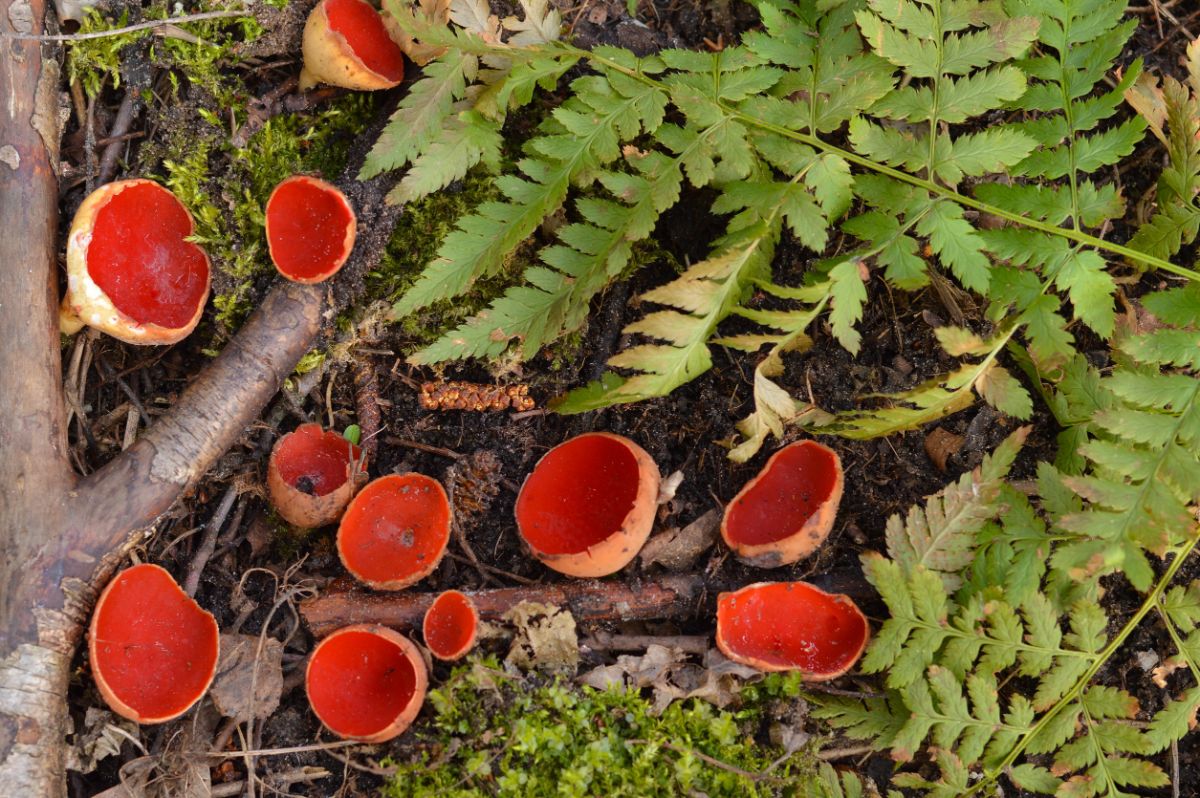
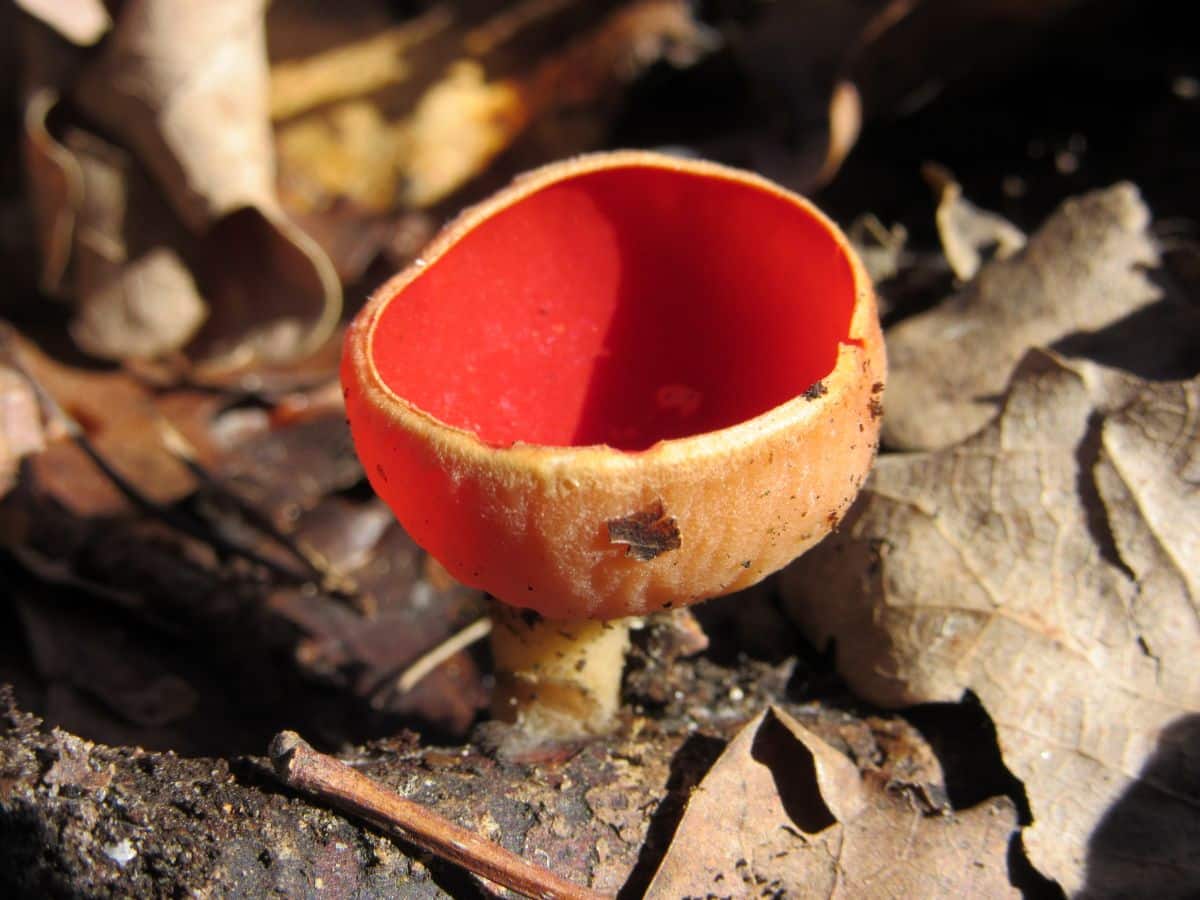
Jump to:
All About Scarlet Elf Cups
There are approximately 28 species of elf cups, Sarcoscypha species, worldwide. Not all of them are red, though. This guide covers the four scarlet red species that occur in North America. Common names for all species include scarlet cup, scarlet elf cup, red cup, scarlet elf cap, moss cups, and fairies baths.
Differentiating between the four species of scarlet cup fungi (Sarcoscypha sp.) that occur here is very challenging. Knowing it is a scarlet elf cup may be as far as you can get unless you have a microscope.
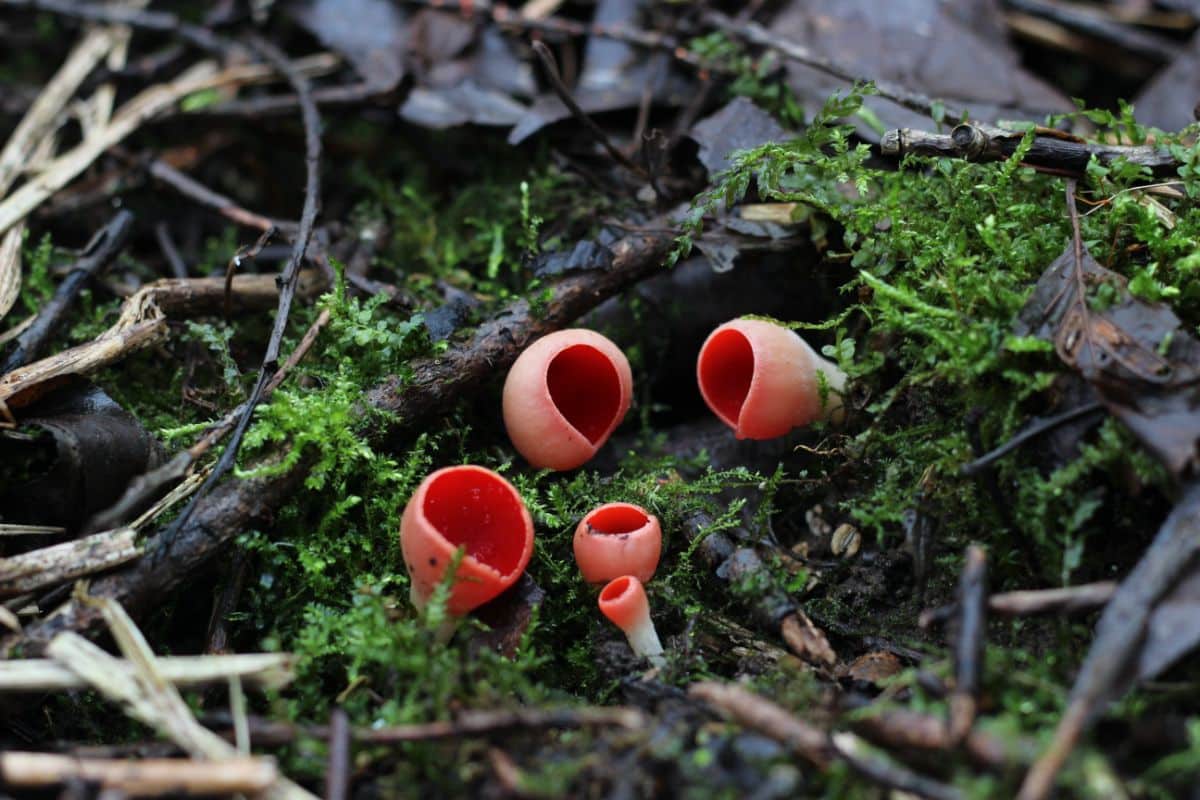
Scarlet elf cups are saprobic, meaning they feed on dead and decaying organic material. They love damp, mossy conditions and cool weather, fruiting either in spring or late fall, or winter. They’re one of the few fungi that can grow in below-freezing temperatures.
The fruiting bodies of these fungi really stand out. They are cup-shaped, scarlet red inside, and lighter red or whitish on the outside. The color contrast is remarkable and distinguishing. This is especially true when they appear in early spring or winter when the background is white or very brown and gray.
Prior to the 1980s, Sarcoscypha coccinea was the only scientifically described species of scarlet elf cup in North America and Europe. Botanists and mycologists knew that there were likely more species within the one, but no in-depth study was done to illuminate the types.
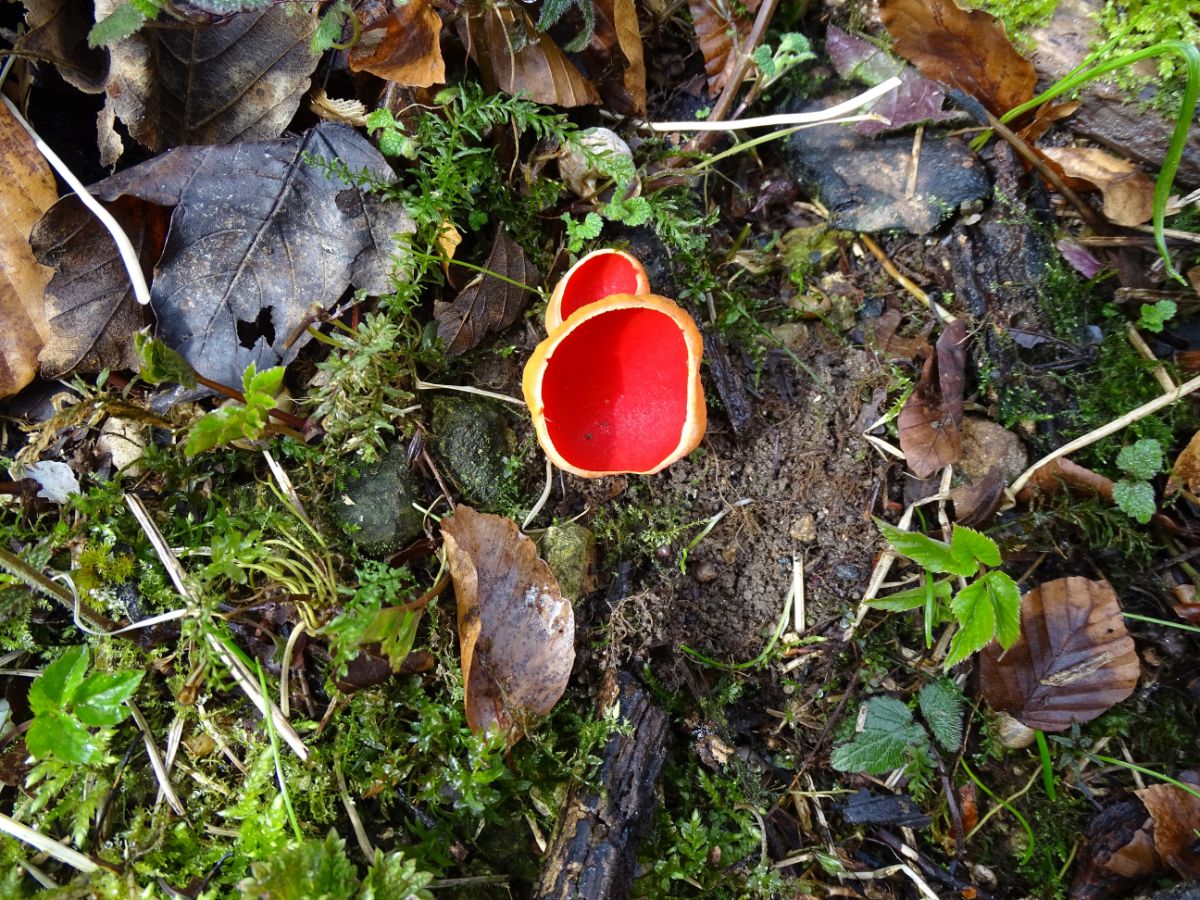
Because of this one-name-for-all situation, field guides listed all scarlet cups under this scientific name. Older identification books will definitely have the Sacroscypha coccinea name, and even some newer ones continue the one-name approach, although we know for sure now that it is incorrect.
Sacroscypha coccinea and Sacroscypha austriaca are red-listed in Europe, with S. coccinea being of special concern in Great Britain, where it is now very rare. In Turkey, it is listed as critically endangered.
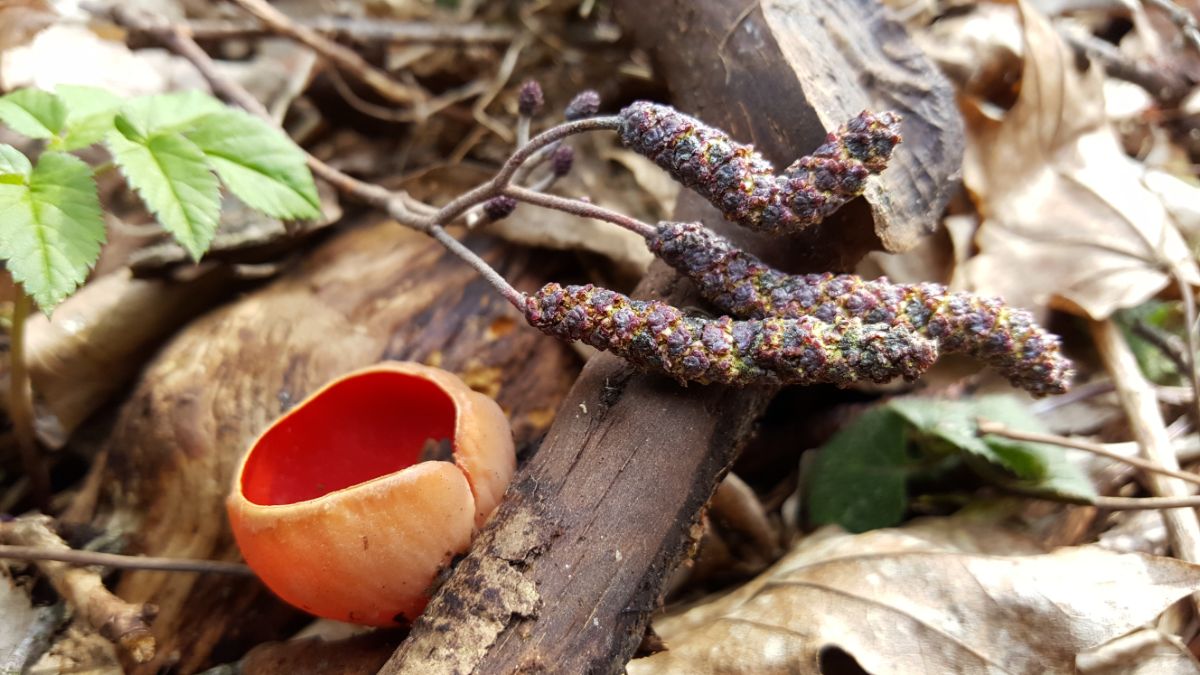
Scarlet Elf Cup Medicinal and Culinary Uses
The Oneida people, and possibly others of the First Nations tribes, used the scarlet cup fungus medicinally as a styptic (hemorrhaging prevention). They dried and ground the fungus, which was applied as a powder. Common uses were to heal newborns’ navels after removing the umbilical cord. Mashed-up bits of the fungus were also used under bandages to promote healing.
In northern Russia, the tiny fungus is eaten in salads, used as a garnish, or fried. There are reports of other cultures harvesting and eating the scarlet cup, but it isn’t a preferred species due to its small size.
In parts of France, it is reported children eat the fungus raw on bread with butter. A french cookbook author suggests mixing the fungus with cherry brandy and adding them to a fruit salad.
Current determinations on edibility run the gamut. Most guides list them as inedible, undesirable, or simply not recommended, based solely on their small size and lack of culinary value. They’re a bit chewy and tough, with a woodsy, earthy flavor. These reasons make it unsought but not inedible. Scarlet elf cups aren’t poisonous.
Scarlet elf cups are said to be good lightly fried as a sort-of crunchy crouton garnish. They are also fun as a pop of color in stews or stir-fries. While there are reports of eating them raw, we do not recommend this.
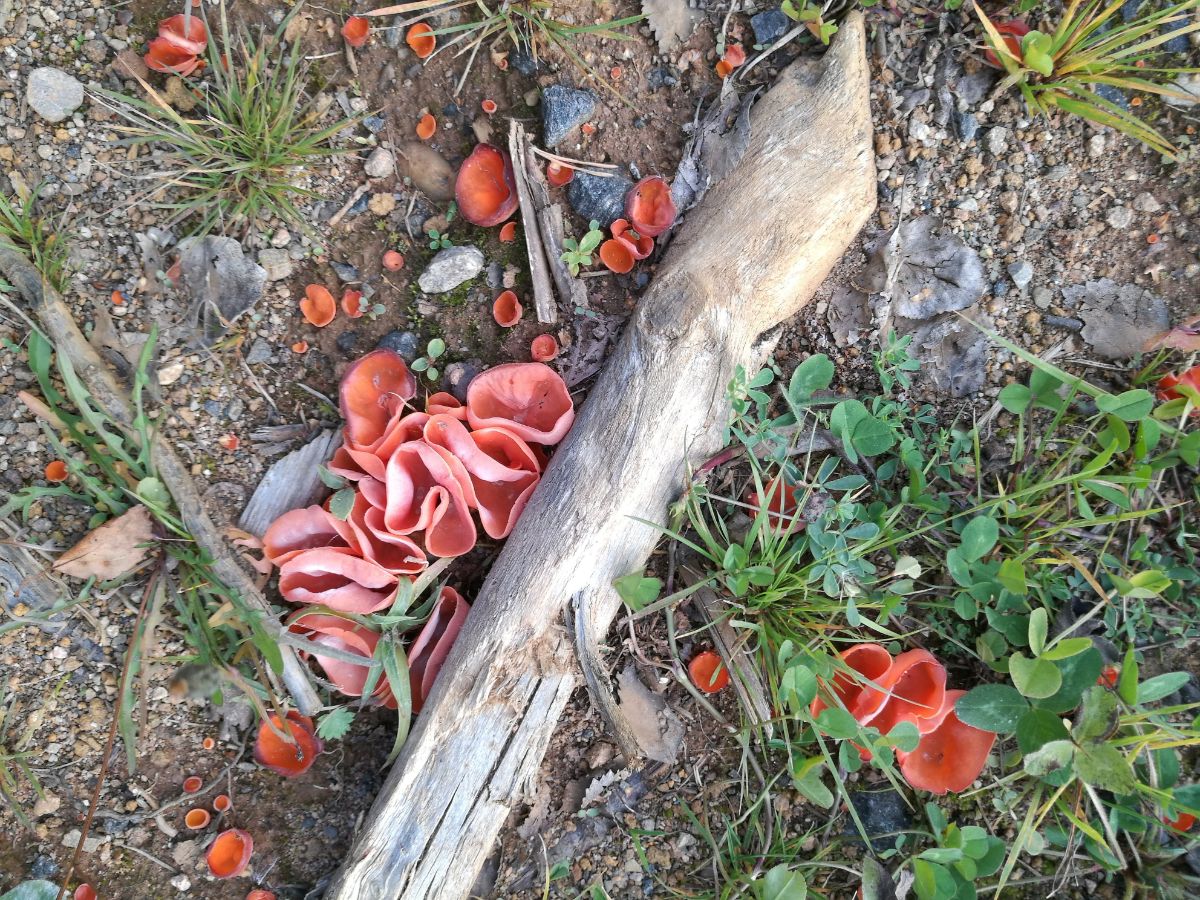
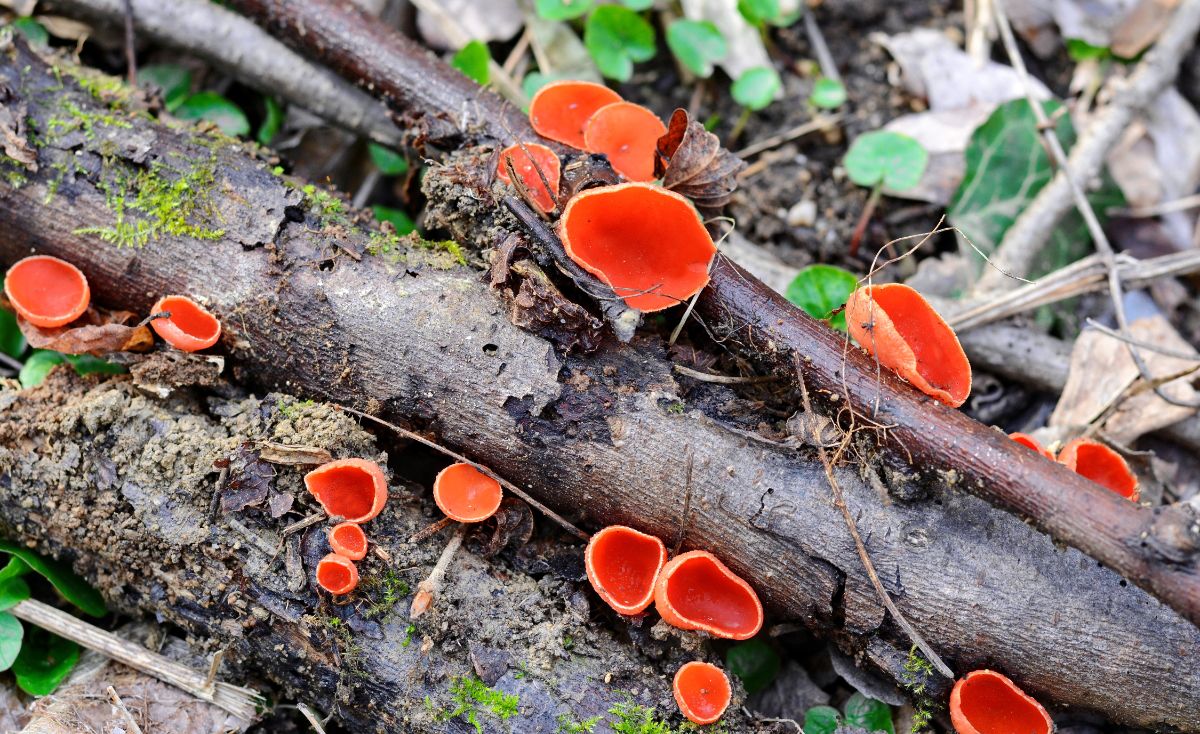
Scarlet Elf Cups Identification Guide
Scarlet cups grow on decaying hardwood, usually sticks or branches, but also from stumps. They seem to prefer oaks, beech, hazel, willow, hickory, and elm. The fruiting bodies can grow singularly but more often are in clustered or scattered groupings, sometimes appearing in dense masses.
They are commonly slightly buried in leaf litter and may look like they are growing from the ground. In these instances, they’re fruiting from decaying wood buried in the ground. If you dig enough, you’ll find it.
Scarlet elf cups growing on sticks are usually smaller than those growing from buried wood. The matured scarlet cups persist for a long time, potentially up to 24 weeks, without deteriorating. This is especially true if the weather is cool.
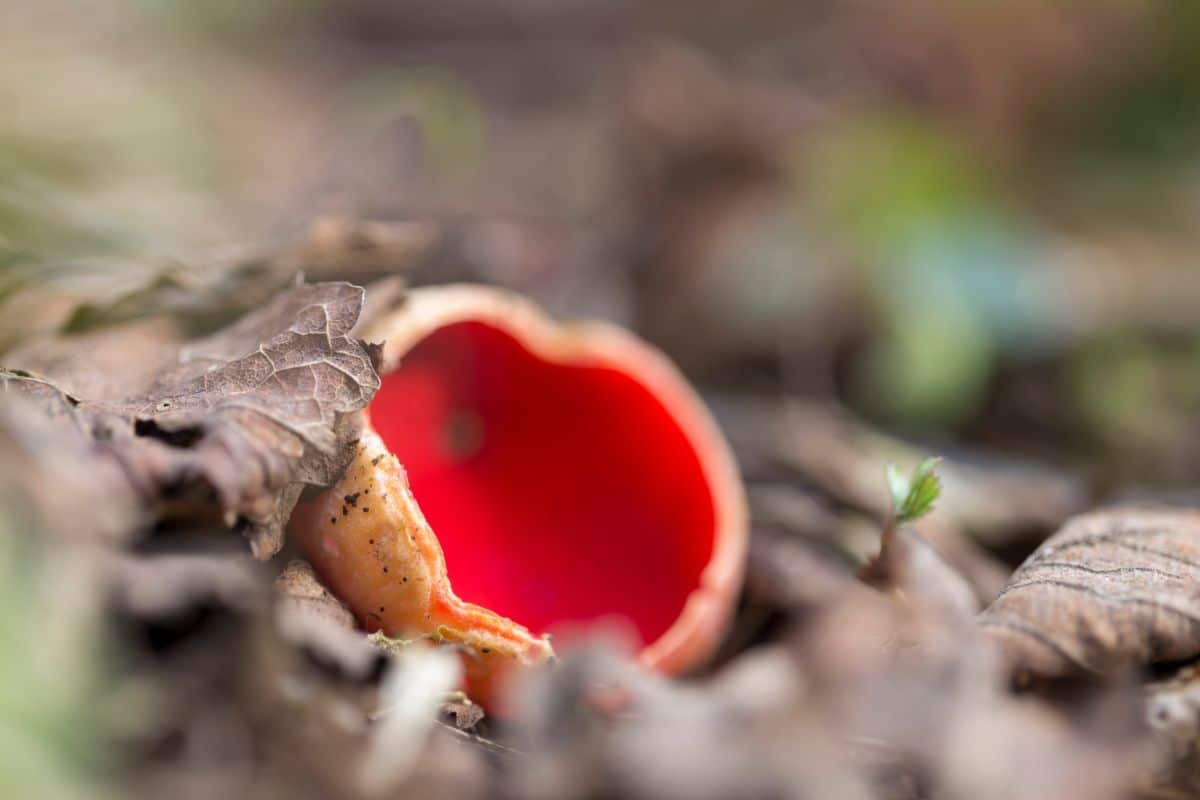
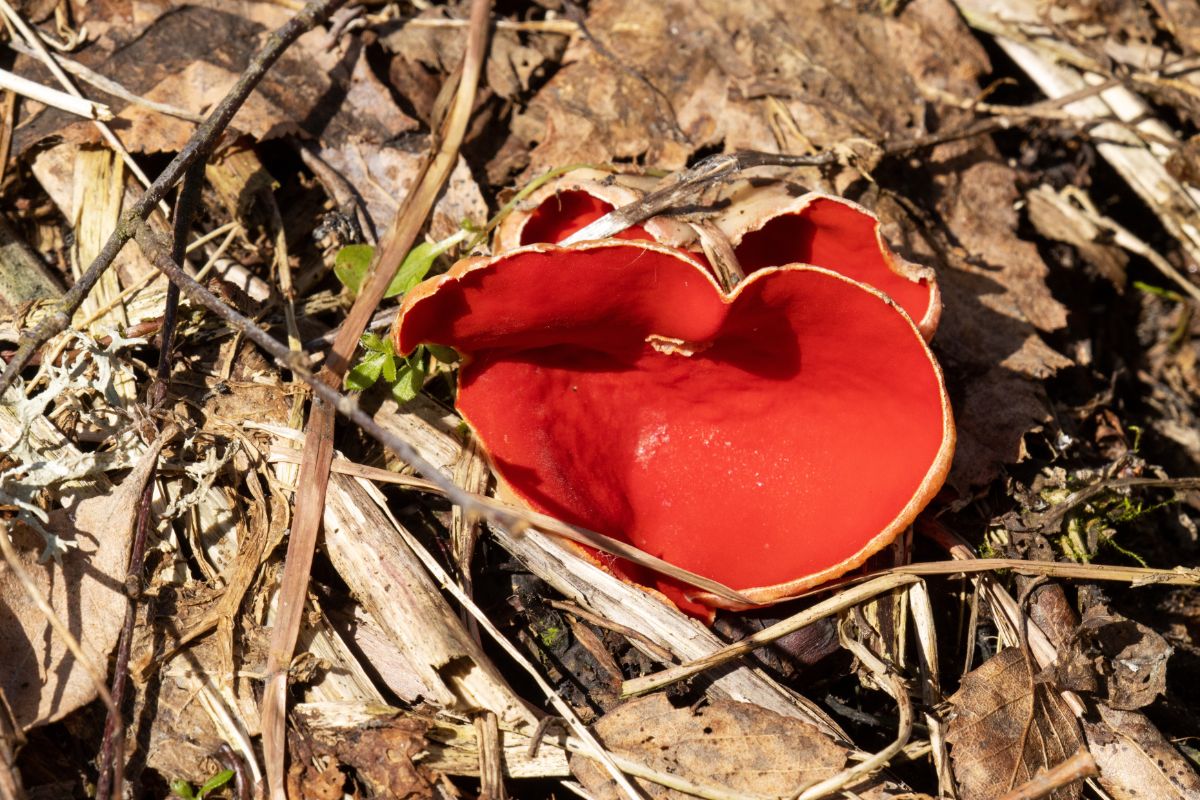
North American Scarlet Elf Cups
All of these four species look very much alike. Usually, you can make an educated identification based on location and time of year – they tend to be geographically and seasonally specific. In some cases, though, that doesn’t work, and you’d have to dig up a microscope to be sure which one it is.
Sarcoscypha coccinea (“THE” Scarlet Elf Cup)
This is the most well-known name for scarlet elf cups. This is also the only species that occurs on the west coast; all others are east coast species.
- Region: Pacific Northwest and California
- Season: Winter and spring
- Habitat: On dead and decaying hardwood, usually sticks
- Description: Cup-shaped body with a scarlet red interior and whitish exterior. The red fades to orange with age. The exterior may be smooth but is more often covered in a dense layer of thin hairs to give it a downy appearance and feel. Often the exterior looks reddish instead of white because the brilliant scarlet of the interior shows through the thin flesh. The stem is usually absent but may appear as a small white stub up to 1.6 inches long.
- Size: Up to 1.75 inches wide
- Notes: This fungus has a unique talent: it makes an audible noise when it discharges its spores – it sounds like a short puffing exhalation.
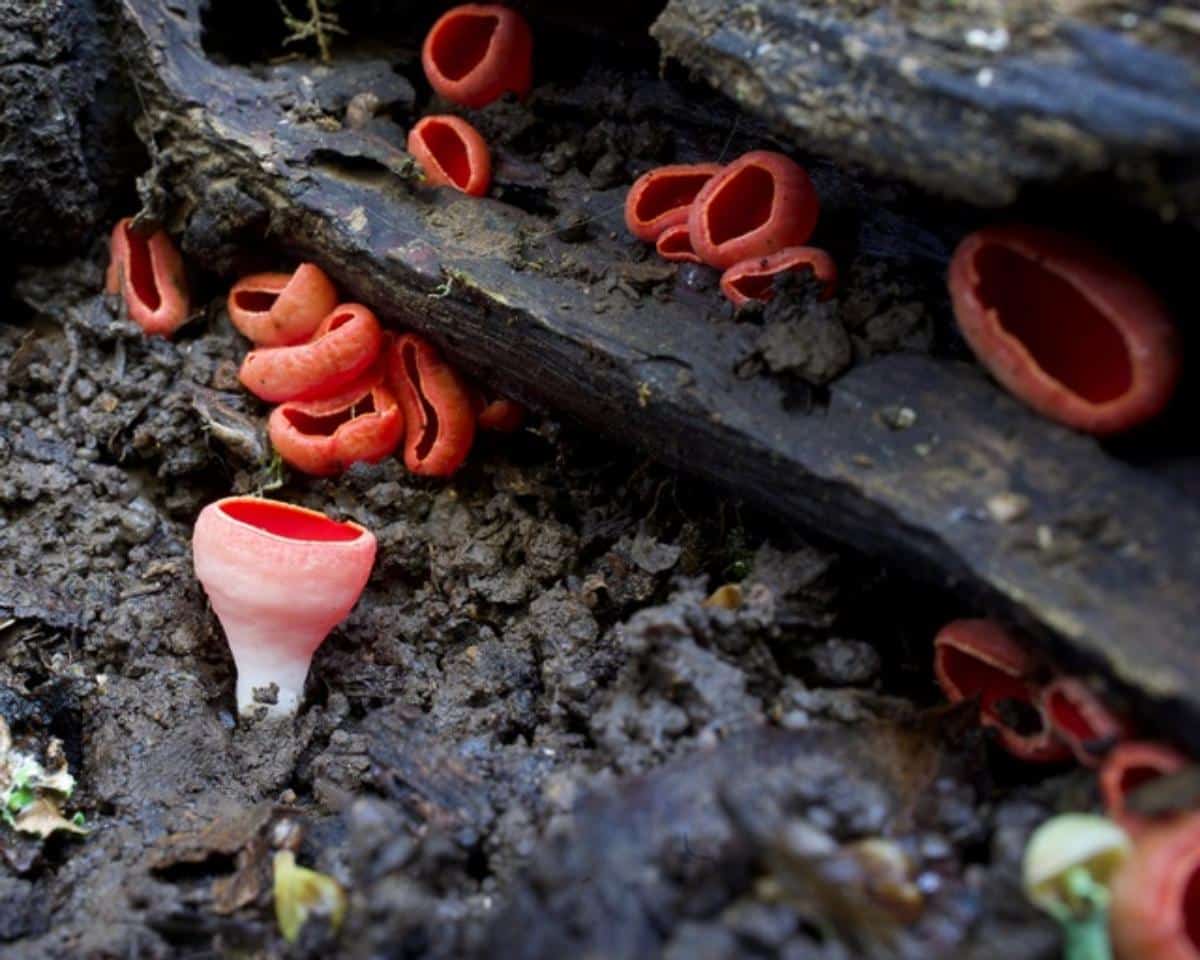
Sarcoscypha occidentalis (Stalked Scarlet Cup)
- Region: East of the Rocky Mountains
- Season: Spring through fall, but more common in summer and fall. It often appears directly after morel season ends.
- Habitat: On dead and decaying hardwood, usually sticks
- Description: Cup or saucer-shaped body with a scarlet red interior and whitish exterior. The red fades to orange with age. The exterior may be lightly hairy or smooth. Often the exterior looks reddish instead of white because the brilliant scarlet of the interior shows through the thin flesh. It has a .25-1.25-inch stem that is the same color as the exterior. This gives it more of a funnel or chalice-like appearance. At the base of the stem is thin mycelial “root” strands.
- Size: Tiny, up to .75 inches across. Rarely may be found larger.
- Notes: Count yourself an incredible mushroom hunter if you find this species. This isn’t because it’s rare; it’s because it’s so tiny it is easily overlooked or dismissed as non-mushroom forest litter.
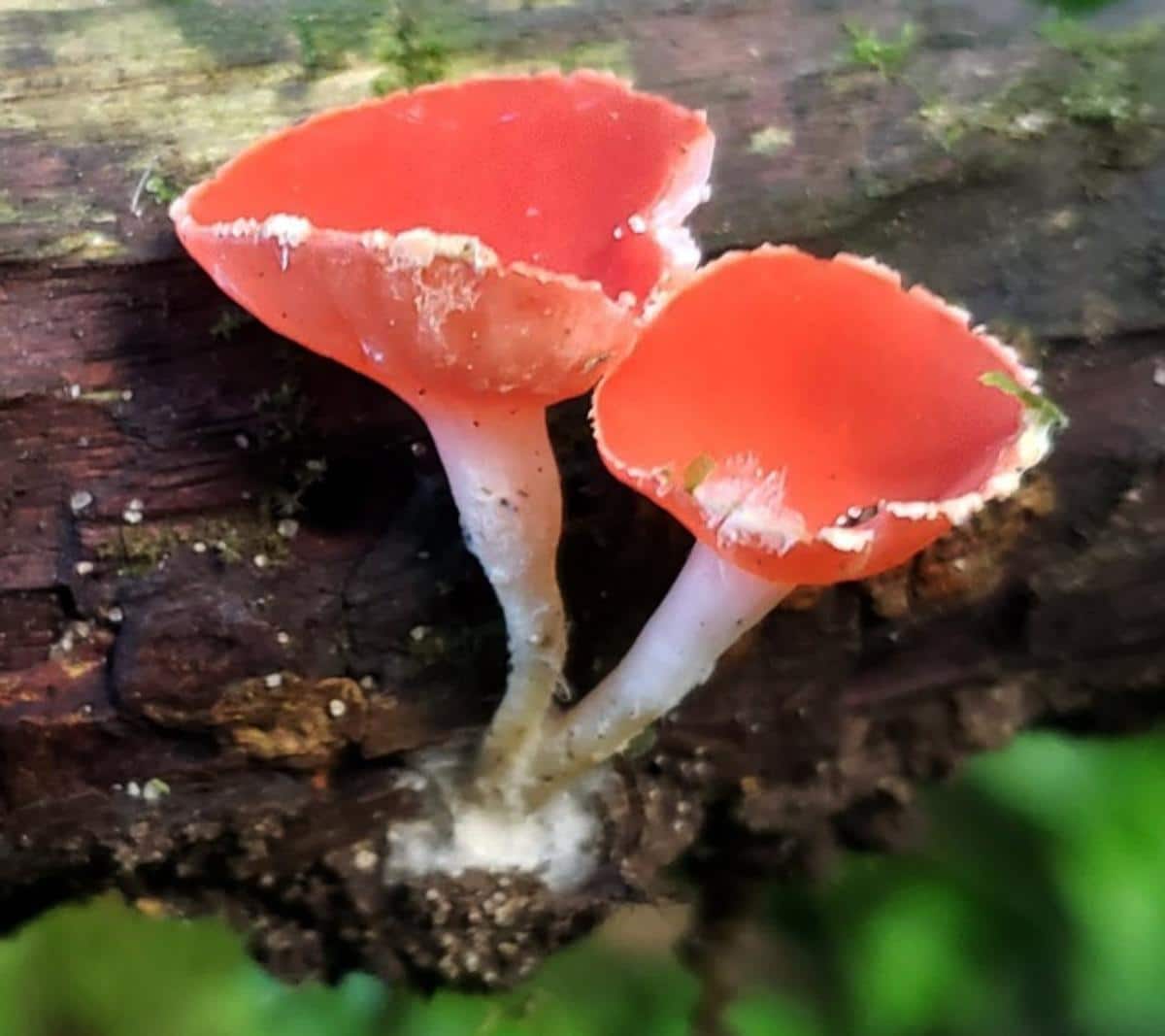
Sarcoscypha austriaca (The Austrian Crimson Cup)
- Region: Widespread east of the Rocky Mountains
- Season: Spring, coincides with morel season
- Habitat: On dead and decaying hardwood, usually sticks
- Description: Cup-shaped body that is commonly irregularly shaped with a scarlet red interior and whitish or pinkish exterior. The red fades to orange with age. The exterior is lightly hairy, feeling downy to the touch. Often the exterior looks reddish instead of white because the brilliant scarlet of the interior shows through the thin flesh. The stem is absent or a small, almost nonexistent stub. This species sometimes (rarely) produces an all-orange or all-white body.
- Size: .75-2.75 inches wide
- Notes: This species is impossible to differentiate from S. dudleyi without a microscope. They fruit at the same time, have basically identical features with only negligible differences. It is not known (scientifically examined) whether this species is the same as the Austrian species with the same name.
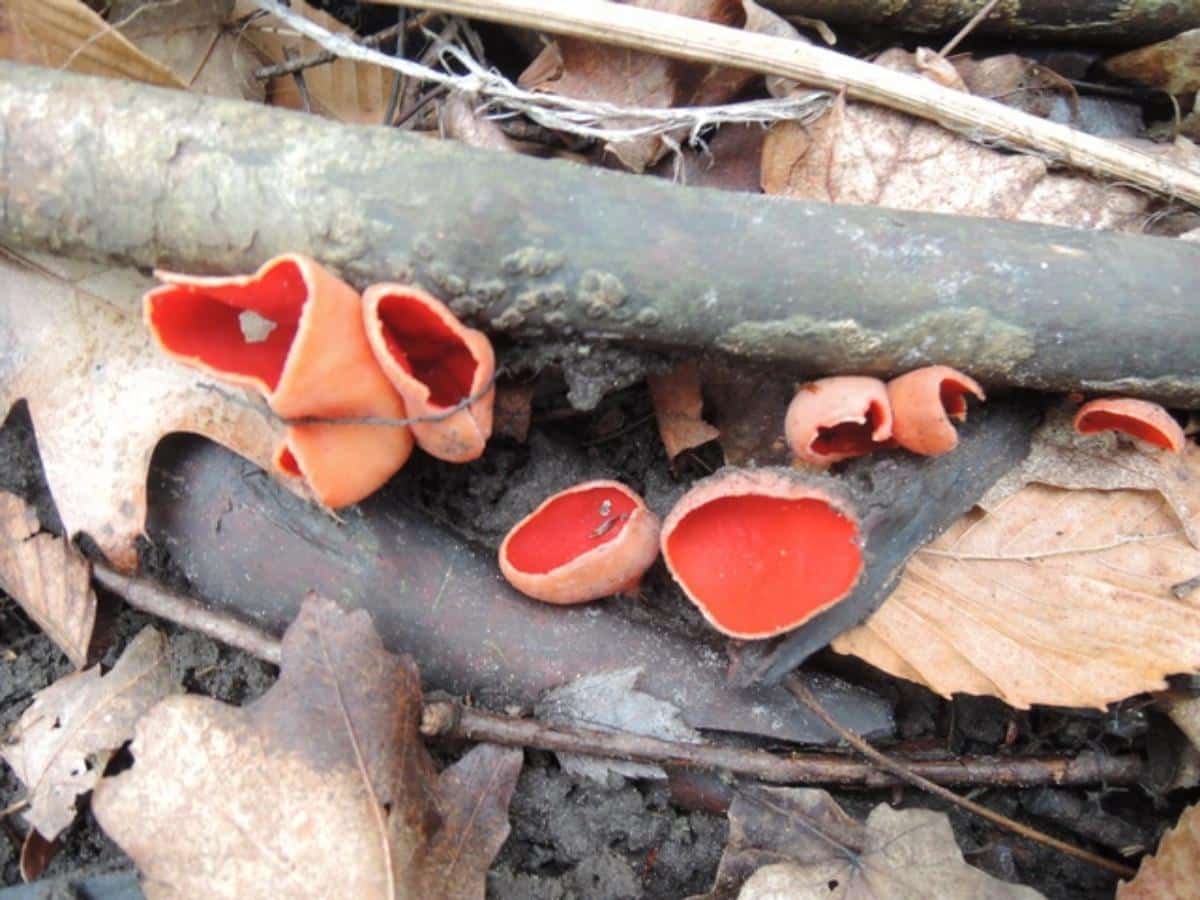
Sarcoscypha dudleyi (Crimson Cup)
- Region: Widespread east of the Rocky Mountains
- Season: Spring, coincides with morel season
- Habitat: On dead and decaying hardwood, usually sticks
- Description: Cup-shaped body that is commonly irregularly shaped with a scarlet red interior and whitish or pinkish exterior. The red fades to orange with age. The exterior is lightly hairy, feeling downy to the touch. Often the exterior looks reddish instead of white because the brilliant scarlet of the interior shows through the thin flesh. The stem is absent or a small, almost nonexistent stub.
- Size: .75- 2 inches wide
- Notes: Without a microscope, this species is impossible to differentiate from S. austriaca. They fruit at the same time, have basically identical features with only negligible differences.
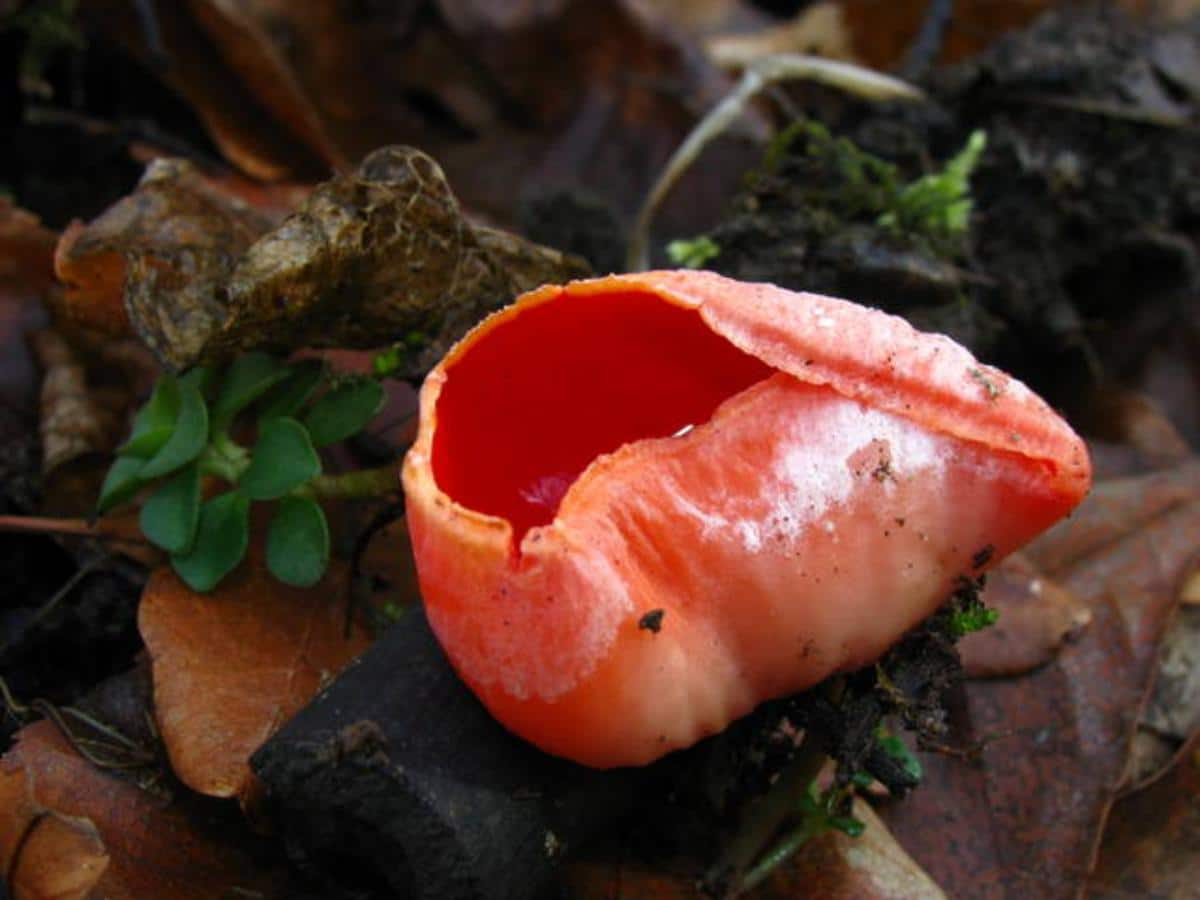
Curious about other unique-looking fungi? Check out our guides to stinkhorns, bird's nest fungi, and witches butter.
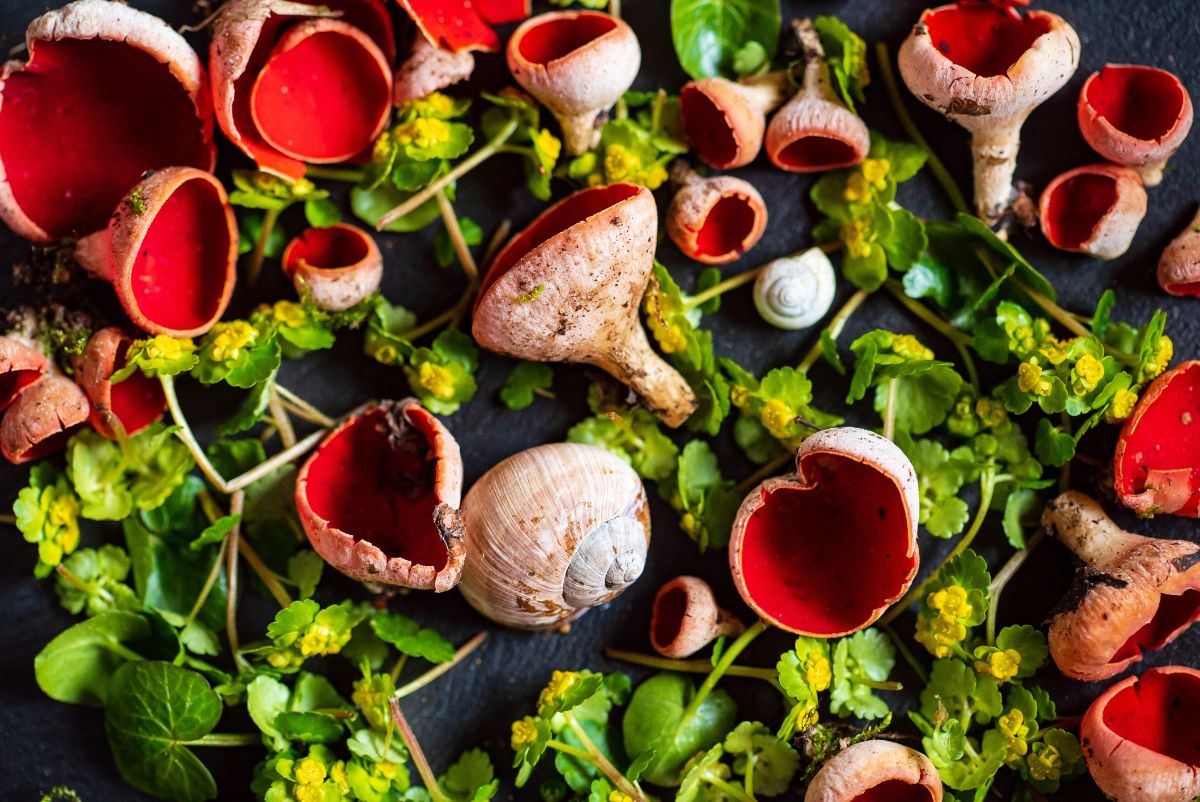
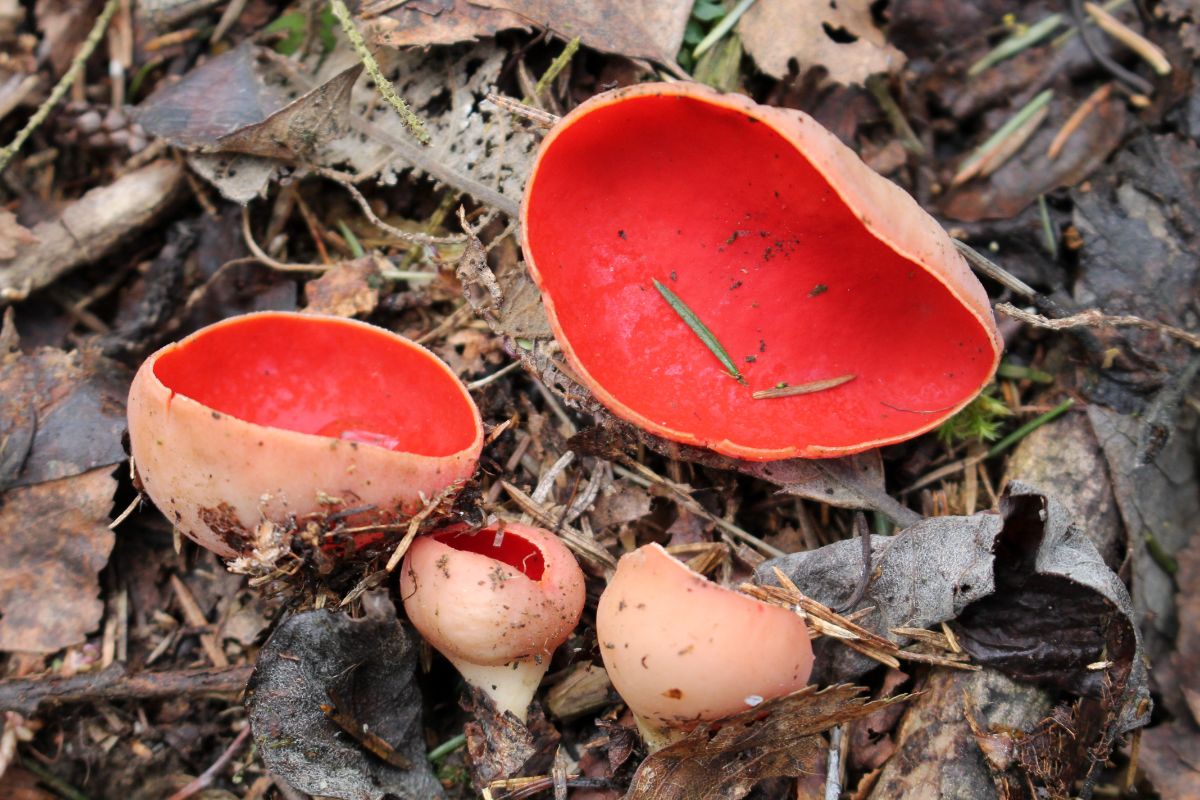
Common Questions About Scarlet Elf Cups
Is the scarlet elf cup mushroom poisonous?
No. These species aren’t poisonous.
Are scarlet elf cups edible?
There is a debate about whether they’re edible, but really that debate isn’t about edibility because you can eat them. The real debate is whether it is worth it to forage and collect them since they’re so small and don’t have any particular outstanding flavor.

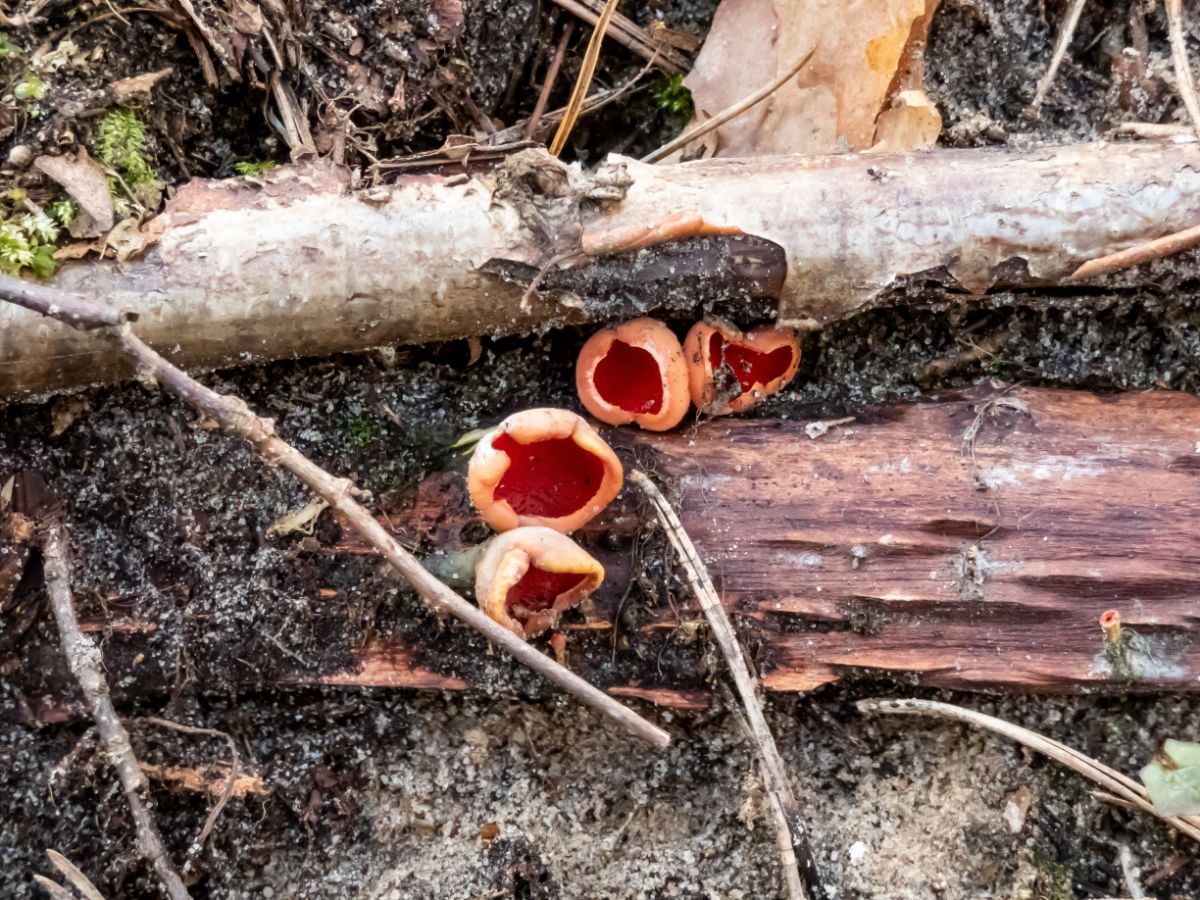






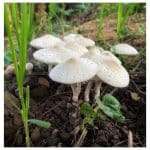
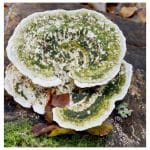
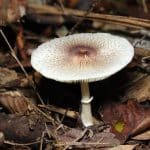
Anna Lupton says
Would love to know how to go about drying them for Christmas decorations Is this possible please
Jenny says
I don’t know. I’ve never done this but I’m guessing it’s possible. I think the best bet would be to ask natural crafters